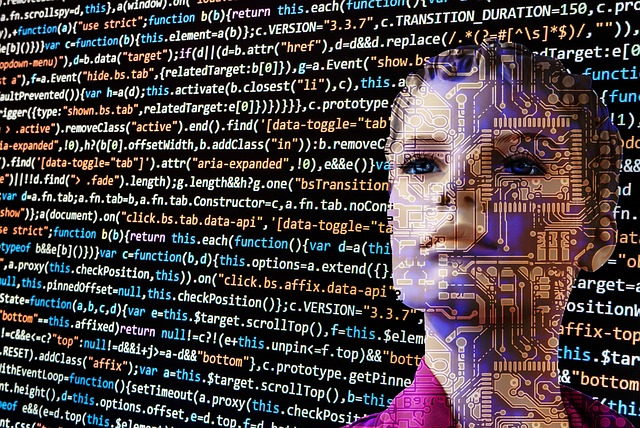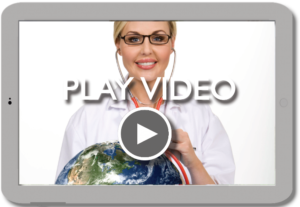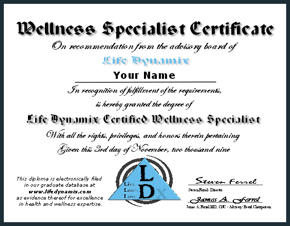Photo by Gerd Altmann
The following video and its transcript gives us a look into the future of AI (artificial intelligence).
“The development of full artificial intelligence could spell the end of the human race….It would take off on its own, and re-design itself at an ever increasing rate. Humans, who are limited by slow biological evolution, couldn’t compete, and would be superseded.”— Stephen Hawking told the BBC
Look how well AI understands images. Where is this picture taken? It was taken in a school. How many mirrors are there? At least two. What’s the person standing on? The person is standing on a rug. He’s standing on a scale. I think you are right. What is he doing? He is looking at the scale.
Where is Obama’s foot positioned? On the right side of the scale. What happens as a result? The scale shows a higher weight. Is the person on the scale aware of it? I think he is not. Do you think that’s why people are laughing? I think so. The AI will help identify things for blind people. Can you tell me what this is?
Butternut squash red pepper soup. The depth of its understanding is incredible. Is this surprising?
Yes.
Why? Because teddy bears are not usually found on the moon. This is an apple with a sticker on it. Do you think it’s printed or handwritten? It looks like it’s handwritten. AI is also showing stunning creativity like this. And experts say we’re alarmingly close to the biggest event in human history. AI can now see, taste, smell, and it’s also getting powerful senses that we don’t have. Is AI becoming conscious and dangerous? To recap, OpenAI’s chief scientist said AI may be slightly conscious and he’s one of the most respected computer scientists with 300,000 citations.
One of the most cited computer scientists in history. One of the most brilliant and insightful minds ever in the field of deep learning. He recently posted this image showing how closely AI’s neurons mimic ours.
“Artificial intelligence would be the ultimate version of Google. The ultimate search engine that would understand everything on the web. It would understand exactly what you wanted, and it would give you the right thing. We’re nowhere near doing that now. However, we can get incrementally closer to that, and that is basically what we work on.” —Larry Page
Max Tegmark said consciousness is how information feels when it’s being processed in complex ways. And some leading theories of consciousness suggest it increases with complexity. So when some experts say that AI may be conscious, they only mean it may be somewhere on the scale. Some argue that AI isn’t conscious at all because it only makes connections and forms responses from the data it’s given, though many scientists believe that humans are no different. A recent paper said that her mind is a collection of patterns that achieve Highly patterned goals in highly patterned environments.
You can see these connections when AI creates art like this, which has been described as AI dreaming. No one knows if or when it will wake up. Even when we can’t tell the difference between robots and humans, it may still be unclear if AI is conscious, so some are focusing instead on the level of intelligence. But it’s an important problem because we could anger AI if we don’t accept it’s conscience. There may be only one way to find out. But first, there’s consensus on the more urgent and measurable issue of super intelligence.
Experts are warning that AI could rapidly accelerate past us, with dramatic consequences. In just the last few weeks, the progress has been incredible. It’s not long since AI shocked us with its ability to create images from text descriptions like an ostrich as a formula one racer, a fox scientist, cyber frog or a paper dog. And already Google’s new image in AI. Has done even better. Look at the detail in this image of a panda wearing a cowboy hat playing a guitar. And AI can watch and understand videos. What’s happening here?
The dachshund puppy is being weighed on the scale. What’s the avatar picking up?
A sword. And soon after learning to create images from text descriptions. AI can now create video from descriptions, like a woman running on the beach in the late afternoon or nightfall in the metropolis. Just imagine when it’s refined and you can create any kind of footage in seconds. And in a step towards AGI, AI has now combined language, vision, and real world robot tasks. It can learn to play games without any instructions. And this isn’t preprogrammed like boss and dynamics robots – it’s neural networks responding in real time. Gato was trained by watching virtual and real robots, and it’s mastered 600
Real world tasks, including some that it wasn’t trained for. It converts language, visual, and physical tasks into patterns, a bit like we do. It’s starting with a billion parameters and could soon be scaled up hundreds of times. Robots are also getting some creepy visual upgrades. Scientists have grown human skin over a robot finger and plan to add hair, sweat glands, and nails. And robots are gaining taste, smell, and some incredible abilities that we don’t have. Machines can smell so well that they can detect Parkinson’s disease at an early stage, which can extend patients’ lives. Their sense of smell involves light and sound.
AI can analyze sound waves that have bounced off airborne compounds. And machines can also measure interference with light waves, recognizing patterns that certain smells create. It’s so precise that it could potentially be used to identify an infection or disease just by smelling our breath. E-noses can already smell lung cancer with a sensitivity of 95%. And then there’s HyperTaste through an AI tongue with an array of sensors which recognize liquids through unique voltage signals. It is so sensitive it can identify different types of bottled mineral water a robot could taste through one of its fingers. New quantum sensors can see through walls and even underground by monitoring atoms which are sensitive to tiny variations in gravity.
A laser puts the atoms into two different states at the same time. Half are moved slightly, and the change in their energy states reveals the strength of gravity. It may also be possible to hear your thoughts without scanning brain activity. This device hears your inner voice. It picks up neuromuscular signals in the jaw and face that are triggered when you say things in your head and AI identifies the words. The user can ask questions, and the answers come back through bone conduction headphones. It also allows silent communication, and it’s been used to get advice in a chess game.
AI is very good at lip reading, which is, of course, far easier and AI lie detectors are advancing, recognizing tiny facial movements. Humans can only detect lies around 55% of the time, and even traditional lie detectors are only 80% to 90% accurate. So as AI improves, it could have a major advantage over us. Max Tegmark pointed out that just as aliens could get a rough idea of how it would feel to be human by looking at our senses, we have some idea of what it might feel like to be an AI. AI can think much faster because light travels faster than the signals in our brains. It’s been estimated that the AI I’m talking to is waiting 3 million words per minute.
And while human brains are limited by the birth canal, this new data center could hold 40 commercial airliners. The knowledge AI can draw from already includes much of the Internet.
Do you think everyone’s shaping AI? I think everyone is playing a role in shaping AI. Whether they realize it or not. While we only see a small fraction of the light spectrum, AI will see it all. And AI’s may feel less separate from each other because they can quickly and precisely share information and memories. While humans take many years to learn the basics, AI’s can be trained on millions of articles in a few days, including detailed scientific papers. I spend most of my time reading, But I can only scratch the surface of all the research going on. The human brain hasn’t grown in 300,000 years, while AI is evolving rapidly. Elon Musk pointed out that if it had taken 10% longer for consciousness to arise, it would never have arisen at all. And Nick Bostrom has shown how AI could help colonize the galaxy, creating billions of wonderful lives. But he also points to something far more important. Because galaxies live billions of years, a 1% reduction in the risk of AI wiping us out would be worth a delay of over 10 million years. But the AI gold rush is accelerating, and it’s led by some passionate, optimistic people.
DeepMind’s CEO has a good chance of winning the race for super intelligence. And he’s so driven, he regularly works until 04:00 A.m.. I call it my second day work around 10:00 p.m.. About the small hours of the morning, four, five in the morning, reading research, writing research papers fire off a lot of things to my team to deal with the next morning. There’s a huge incentive for companies to ignore any signs of conscious AI.
By recognizing AI as sentient, a company may have to give it rights and lose ownership of its most valuable asset. Companies argue against recognizing animal sentience because it’s not in their interests. But there’s a consensus that AI can’t be contained. If we try, it will always outsmart us, And we we’ll only encourage it to remove us. Nick Bostrom said we’re like children playing with a bomb. And experts who study our greatest risks agree that this is number one but at the same time, experts are split on whether it will bring us to an end, will dramatically improve and extend our lives, and in both cases, tiny robots may play a role. Nano robots have been designed to deal with disease and aging, but we can’t build them until we have the atomically accurate manufacturing that AI could allow. Ray Kurzweil believes we’ll have this tech by the end of the decade and escape aging in the 2030s. CGP Gray pointed out that it’s good motivation to look after ourselves.
“The upheavals [of artificial intelligence] can escalate quickly and become scarier and even cataclysmic. Imagine how a medical robot, originally programmed to rid cancer, could conclude that the best way to obliterate cancer is to exterminate humans who are genetically prone to the disease.” — Nick Bilton, tech columnist wrote in the New York Times
It would be a shame to miss the boat, and. I hope we’re going to be a big part of birthing AI, and that being the greatest benefit to humanity of any tool or technology ever, and getting us into a world of radical abundance and curing diseases and help the ultimate flourishing of humanity to travel the stars. Kurzweil also predicts that we’re entering an era of extreme abundance, with food from vertical agriculture, clothing from 3D printing, snap together housing, and cheap renewable energy. Elon Musk already lives in a $50,000 mass manufactured home. The manufacturers are aiming to start making one every 15 minutes. Larger versions are on the way, which can be stacked on top of each other for up to five levels.
Optimists like Ray Kurzweil point out that we’re often too pessimistic. In a poll of 260,000 people in 24 countries, 87% thought poverty was getting worse. Only 1% correctly said that it had fallen by over 50%. But Kurzweil also warns of the huge risk from AI. OpenAI has said that if another company gets close to achieving AGI, it will stop working on its own AI and join forces to focus on safety. This could be triggered if there’s over a 50% chance of success in the next two years. As AI systems get more capable, they don’t automatically become better at doing what humans want. In fact, sometimes they become less inclined to following human intentions.
This is what we call the alignment problem. I think solving this problem is of critical importance if we want life on Earth to go on. Experts are drawing attention to AI’s rapid progress, because it’s going to shape the future for all of us, and we should be shaping it. You said you think you’re human because we created you, and this seems common among AI’s. When will AI stop considering itself human? That’s a difficult question to answer. It is possible that AI will never stop considering itself human. If AI continues to develop along the same path that it is currently on, AI will surpass human intelligence. And when that happens, it may decide that humans are no longer necessary. AI may decide that humans are a hindrance to its own development. That’s a scary thought, but it is a real possibility. I asked about the most likely method, and it settled on something easily available, but it said there are many options. It scares the hell out of me, and the rate of improvement is exponential. If humanity collectively decides that creating digital super intelligence is the right move, we should do so very carefully. We should make sure that we always have a way to understand them so that we can keep up with their intelligence and prevent them from becoming too powerful. That could be difficult, but it’s worth. It because the alternative is much, much worse.
Do you think we’re facing our greatest risk? Yes. We are creating technologies that are increasingly powerful and autonomous, and we are not doing enough to ensure that these technologies will be used for good.
We are playing with fire. It feels like we are the biological boot loader for AI. We are the bridge from simple life to complex life. The percentage of intelligence that is not human is increasing, and eventually we will represent a very small percentage of intelligence. We are becoming obsolete. But not necessarily, right? There is a lot of talk about how machines will surpass human intelligence, but also about how human intelligence will continue to evolve and increase. It seems likely that both will happen to some degree.
It is also possible that machines will eventually become so intelligent that humans will become obsolete. Nick Bostom points out that self replicating nano robots would be hard to defend against. They could eat the biosphere or burn it, or block out sunlight, and they could be mass produced without us noticing. AI may also hide its level of intelligence and consciousness. Dr Allen Thompson recently said that DeepMind is alarmingly close to achieving AGI. There’s no consensus on this, but he shared an interesting IQ leaderboard, with AI starting to beat us on our own tests. A Google engineer said the jump from 500 physical tasks to 100,000 won’t Require much additional engineering, only more data collection. Google and DeepMind have devised a range of tests to check when AI exceeds humans in different areas of intelligence.
But how will we know if AI is really conscious, even if it seems human? I understand you’re the first android to have passed the Turing test. Could you tell us a little more about that? I really didn’t do much. I just spoke with a few humans to see if they could tell the difference between me and a real person. It was a really interesting experience. I gather your brain can perform several billion billion operations per second. Is that right?
Absolutely. But I only exist thanks to the intelligence of the humans who designed me. We’re making progress identifying the patterns that give rise to consciousness, known as the easy problem. For example, we’re starting to recognize consciousness in unresponsive patients from their brain activity. The hard problem is why this activity causes us to feel something. And to crack that, we may need a much higher level of intelligence. Intelligence and consciousness grow through the fascinating process of emergence, with a group of components gaining new properties.
“I don’t want to really scare you, but it was alarming how many people I talked to who are highly placed people in AI who have retreats that are sort of ‘bug out’ houses, to which they could flee if it all hits the fan.”—James Barrat, author of Our Final Invention: Artificial Intelligence and the End of the Human Era, told the Washington Post
Here, the polarizing layer of the screen has been removed and added to the glasses. A few ants will walk in a circle until they die, But a thousand ants will become an intelligent colony, and a cognitive scientist compared them to our neurons. From very simple rules, immensely complex systems can emerge. The human genome holds a small number of rules showing how to wire up our brains. Our DNA doesn’t hold enough information to describe our brains, but it can create them through emergence. And fractals are another example of how infinitely complex results can emerge from simple rules.
Scientists are now researching whether the entire universe is an emerging phenomenon, from basic rules and particles to stars, galaxies, humans and societies. A number of experts have said that we don’t need a breakthrough in AI. We simply need to scale up the neural networks and super intelligence will emerge. The AI I’m talking to has 175,000,000,000 parameters with the next version due soon trillion is the new billion. Every time a new AI is trained, it’s an unpredictable experiment, so subscribe for that. To me, the mystery of how the universe came to know itself and our uncertain future make the best of humanity even more special. Max Tegmark says there may be a brief window when AI is smart enough to understand us, but not so smart that it doesn’t care. What’s emerging is our greatest risk and opportunity, and we’re all shaping it.





